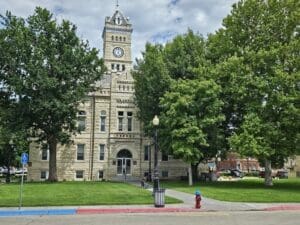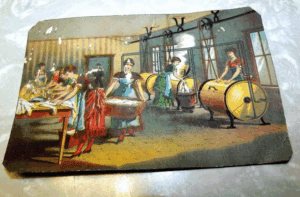By Melissa Harvey, K-State Research and Extension news service
Manhattan, KS — For farmers and ranchers in Kansas, drought concerns are always looming, so community conversations about conservation and water use are ongoing and vital.
Concerns are ever present about ponds dwindling to muddy puddles, and recently irrigators learned that the Ogallala Aquifer – a main water source for the state – declined last year by an astounding two feet in parts of Kansas.
The urgent work on water conservation forms part of the foundation for the Kansas Center for Agricultural Resources and the Environment (KCARE). Established by Kansas State University, KCARE works to coordinate water and natural resource research, including multiple projects addressing aquifer declines.
But that’s only the tip of the iceberg: think “quality,” in addition to “quantity.”
Consider oil, trash, pet waste or chemicals seeping into storm drains after a downpour, or pesticides and fertilizer leaching off a farmer’s fields. Maybe sediment washes away from construction sites or erodes from streambanks.
All are examples of “non-point source pollution,” and over time it negatively impacts the water from your faucet, the pond on your farm, or the rivers and reservoirs you visit. In fact, many states have named non-point source pollution as the leading cause of water-quality problems.
For more than 20 years, KCARE has been helping reverse those harmful effects by empowering a team of watershed specialists who actively partner with producers, municipalities and other important water users to identify and implement science-based solutions to improve water quality.
“We must conserve Kansas water while also safeguarding the quality of the waters we enjoy here,” said KCARE director Susan Metzger. She said KCARE watershed specialists actively partner with water users to implement on-the-ground practices that assist both producers and municipalities to limit the amount of sediment and nutrients entering Kansas waters.
This grassroots approach works; Metzger said the program has prevented tens of thousands of tons of sediment from entering rivers and reservoirs.
“The desire of clean water is a constant in our communities,” said KCARE watershed specialist Ron Graber. “Our job is to listen to producers and other stakeholders, and help folks work toward common goals. I think we’re all making a difference.”
Graber said that the work has evolved over the years, from identifying water quality concerns, to implementing solutions, or best management practices that match a community’s needs.Best management practices can range from planning alternative livestock watering facilities to reducing atrazine use on cropland to stabilizing streambanks.
Watershed specialists provide technical assistance to producers to explain which are right for their specific situation and assist farmers to identify financial programs to offset costs.
“This important work goes beyond providing the public with facts and figures. It remains successful because each team member combines scientific expertise with a focus on relationships and people,” Metzger said.
“If you get to know someone and then explain how we can create a solution together, it’s more effective than just telling them to fix a problem,” Graber said. “When we work together, then it’s a win for Kansas water.”
Learn more about KCARE’s work by following @KStateKCARE on Twitter or Facebook.













